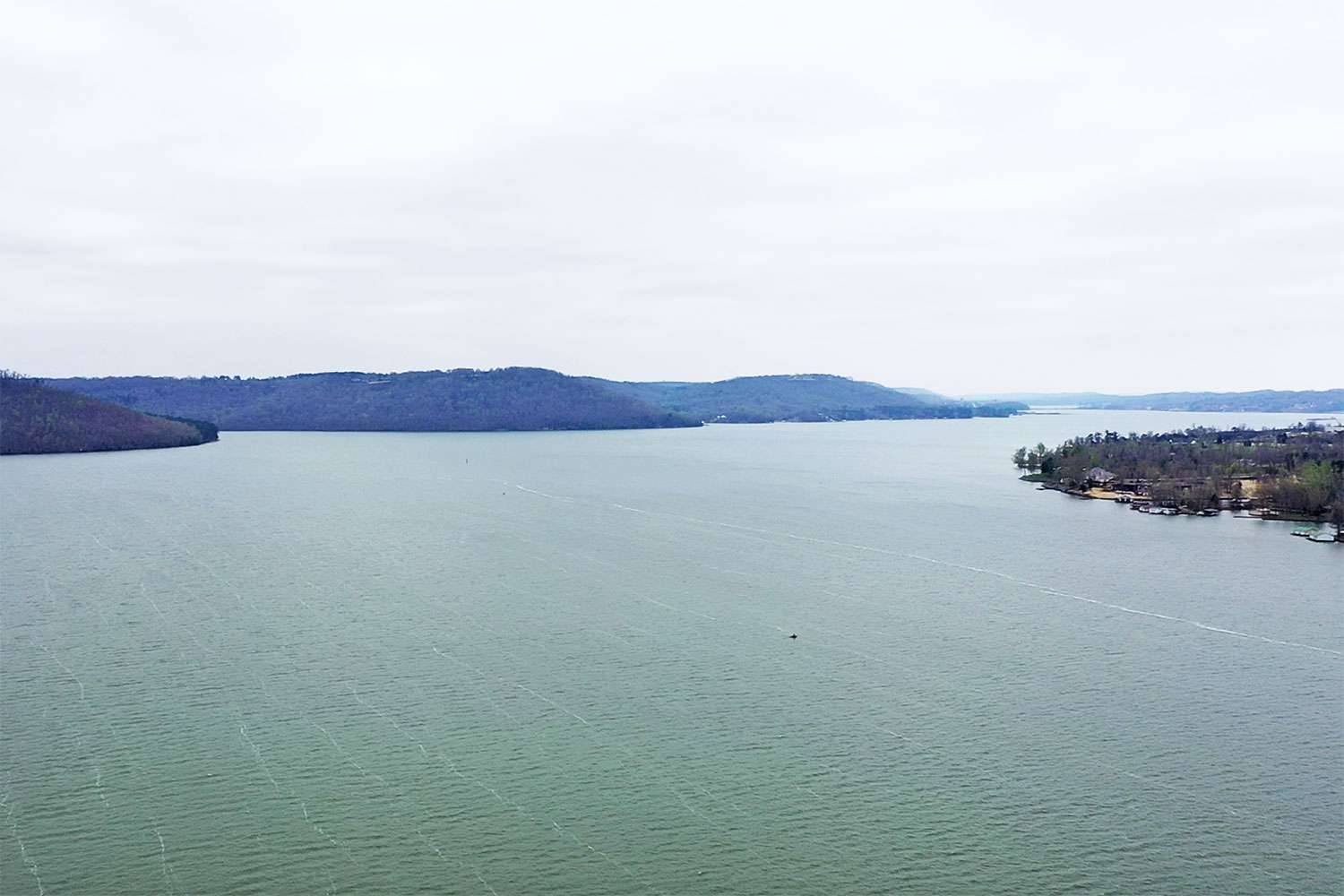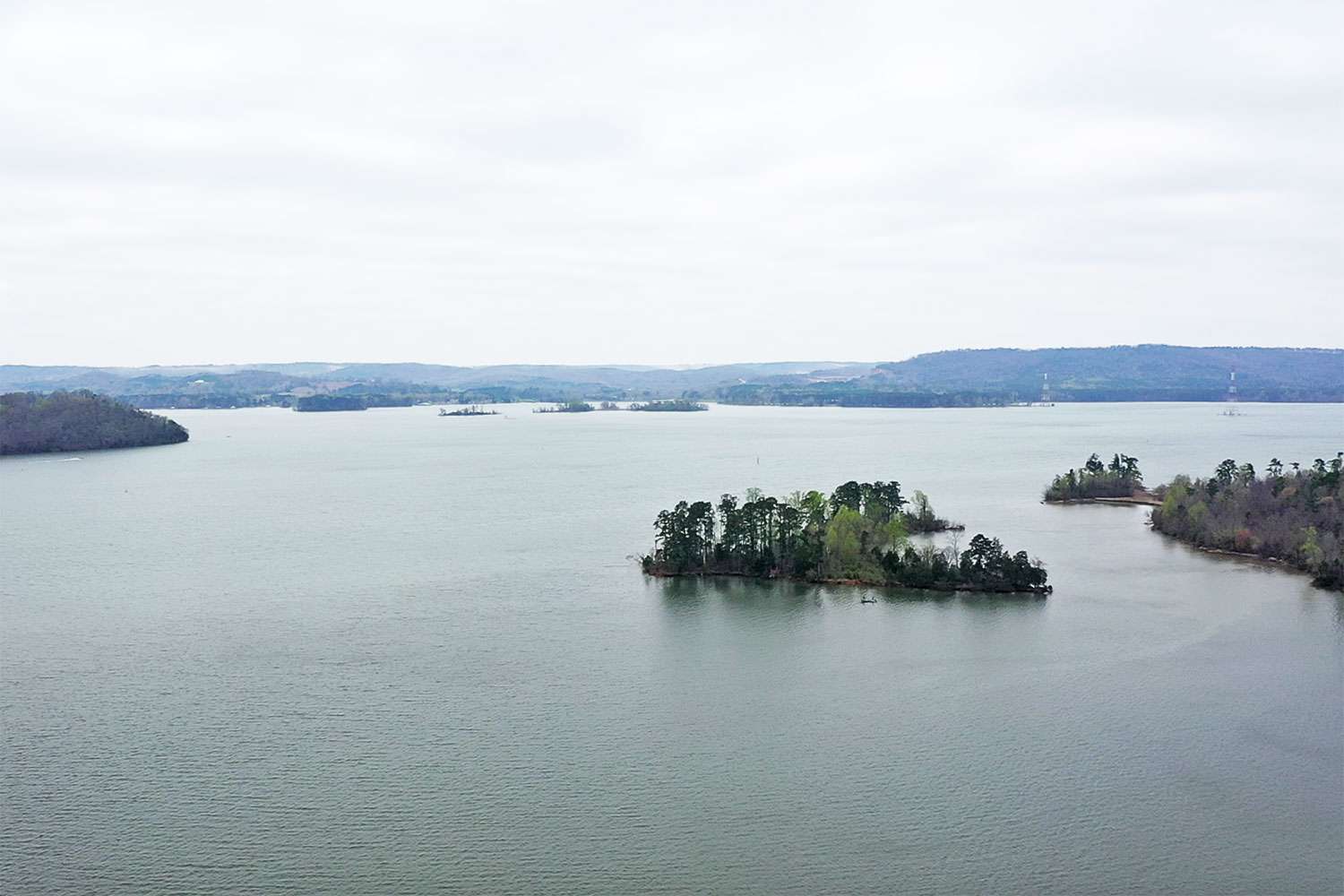
It’s doubtful that anyone from Company E, 167th Infantry Division had any notion that their pre-WWII armory would someday house the historical curations reflecting the waters upon which the Academy Sports + Outdoors Bassmaster Classic would be held. Nevertheless, when bass fishing’s grandest event celebrates its 50th birthday, March 6-8, the castle-like building made from locally-hewn limestone will overlook Lake Guntersville with an array of meaningful memories.
Constructed in 1936 under President Roosevelt’s Works Progress Administration, the building was turned over to the city of Guntersville in the 1970s when the armory moved to a new building. That original stone structure served as a local fire station until the mid-1980s and, after a facelift, it welcomed the Guntersville Museum.
With its building now listed on the National Registry of Historic Places, the museum’s displays include “Mississippi Bill” Harris’ 12-foot fishing boat, Native American artifacts dating to the Paleo-Indian era, a collection of work by nationally-acclaimed local artist Frank Nelson, a display of mostly native birds collected and mounted by the late Bessie Rayburn Samuel in the 1920s and archival photos and historical documents that show the area before the lake was impounded.
Rollin’ on the river
Alabama’s largest lake, Guntersville covers approximately 69,000 acres with 890 miles of shoreline, a 15-foot average depth (60 max) and a length of 75 miles from Guntersville Dam to Nickajack Dam. Located in Northeast Alabama, Lake Guntersville claimed second place in Bassmaster’s 100 Best Bass Lakes rankings for 2019.
The lake and dam project owe their existence to President Franklin Delano Roosevelt’s administration, which created the Tennessee Valley Authority. Formed in May 1933, this hugely impactful Depression Era agency carried out the Unified Development of the Tennessee River plan’s trifold objectives: flood control, navigation and power generation.
Editor’s note: Read more about TVA History.
Objectives one and three are pretty straightforward, but often less obvious is the Tennessee River’s importance in the nation’s international shipping system. Emerging at the confluence of the Holston and French Broad rivers in Knoxville, Tenn., the Tennessee River flows 652 miles into the Ohio River at Paducah, Ky. Completing the 234-mile Tennessee-Tombigbee Waterway (aka Ten-Tom) in 1984, connected the nation’s midsection to the Gulf of Mexico.
To make a lake
Notably, discussions of a dam in the Guntersville area actually preceded the TVA. In fact, the early 1900s saw the Corps considering multiple upstream sites that could alleviate longstanding navigational challenges due to unreliable water levels.

In 1914, the Corps selected a site about 5 miles upstream from the present location, but congressional funding was not available. Six years later, further investigations would identify more potential dam sites, including the one ultimately selected.
After its formation, the TVA assumed control of all Tennessee Valley flood control and navigation projects. On Nov. 4, 1935, the TVA picked up the Corps’ recommendations and determined that a dam at Guntersville was necessary to extend the river’s navigational channel beyond Wheeler Lake — the downstream project presently under construction.
The TVA started the Guntersville Dam project on Dec. 4, 1935, and completed the 94-foot high, 3,979-foot tall structure on Jan. 17, 1939. With 1,800 workers installing 295,700 cubic yards of concrete and 4,600 tons of reinforcing steel, the project’s $41 million cost made it the most expensive project undertaken in Marshall County.
The initial construction included a 60-foot by 350-foot lock, but increasing Tennessee River barge traffic prompted the U.S. Army Corps of Engineers to replace it in 1965 with a 110-foot by 600-foot lock. The main lock can handle vessels up to 600 feet in length with a lifting range of up to 45 feet to account for the elevation difference between Guntersville and Wheeler Lake.
Contrasting all that went into the Guntersville Dam’s construction, this project also required much removal. Some 24,426 acres of the 110,145 acres purchased for the dam were forested, so workers had to clear a bunch of trees. Also, 1,182 families, 14 cemeteries and over 90 miles of roads were relocated.
Ensuring uninterrupted travel throughout the area, Corps workers maintained the primary route through town by raising the old Guntersville Highway — present-day U.S. Highway 431 — constructing access roads to the dam from both sides of the river and rerouting connecting county roads, as needed.
Character points
The lake and dam were named for the town of Guntersville, which was founded by John Gunter (1765–1835), a wealthy salt mine owner and great-grandfather of American humorist Will Rogers. Guntersville was originally called Gunter’s Ferry and incorporated as Gunter’s Landing in 1848, before changing to the present day name in 1854.
Other interesting facts:
Go fast: To celebrate the completion of the dam and the creation of Guntersville Lake, the city sponsored a hydroplane boat race. More than 60,000 attended that summer event — a fitting precursor to the year-round recreational and professional boat traffic Guntersville hosts. The Unlimited Hydroplane racing event, Hydrofest, makes its third Guntersville appearance June 27-28, 2020.
Taking flight: Each summer, thousands of gray bats make a nightly exit from a large cave south of the dam. Best views are from the water.
Into the earth: Hikers will enjoy an easy mile-long loop below the dam, which passes a cave used during the Civil War to mine saltpeter needed for gunpowder.
Earliest inhabitants: Dam construction site preparations included a large archaeological project that recovered human remains and artifacts from several Cherokee Indian sites that were subsequently flooded. Some of the collection can be seen in the Indian Artifact Room at the Guntersville Museum, while the remainder resides with the University of Alabama and the Moundville Archaeological Park and Museum.
The big chill: While certain bays and backwaters have been known to ice over, Jan. 1940 saw Lake Guntersville freeze from bank to bank. The only time this has occurred, the lake froze solid enough to support a 1939 Studebaker American driven onto the ice. This was reported by former WHNT News 19 meteorologist Jake Reed
Safe to say that, regardless of what the weather brings, 53 anglers will do their best to heat things up when the 50th Bassmaster Classic comes to Lake Guntersville.

